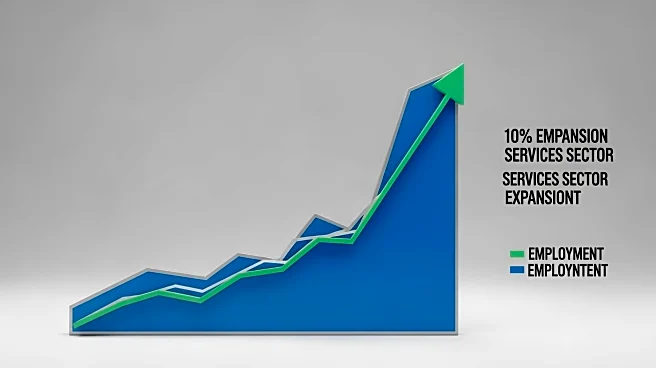What's Happening?
Despite a historically low unemployment rate of 4.3%, American jobseekers are experiencing the slowest hiring pace in over a decade. The job market is characterized by secure positions for employed workers
and a challenging search for those laid off or seeking new roles. Corporate uncertainty over tariffs, artificial intelligence, interest rates, and immigration is prompting companies to hold off on hiring, even as the overall economy continues to grow. This situation has created a 'jobless boom,' where the economy appears strong, but hiring remains sluggish.
Why It's Important?
The current job market dynamics highlight the disconnect between low unemployment rates and the actual hiring environment. This 'jobless boom' affects economic stakeholders, including jobseekers and businesses, as they navigate a complex landscape influenced by technological advancements and policy uncertainties. The slow hiring pace impacts economic growth and consumer confidence, with potential implications for public policy and workforce development. Understanding these dynamics is crucial for addressing labor market challenges and fostering economic resilience.
What's Next?
The U.S. job market is likely to remain challenging as businesses continue to adapt to technological changes and economic uncertainties. Policymakers may need to consider strategies to support workforce development and address the impact of AI adoption on employment. The resolution of the government shutdown and subsequent economic data releases will provide further insights into labor market trends and inform policy decisions. Stakeholders will need to address the implications of these changes on employment and economic growth.
Beyond the Headlines
The integration of artificial intelligence into business operations raises ethical and cultural questions about the future of work and the role of technology in society. As AI continues to influence employment patterns, discussions around workforce retraining and education become increasingly important. The long-term impact of these changes may lead to shifts in labor market dynamics and economic structures.













